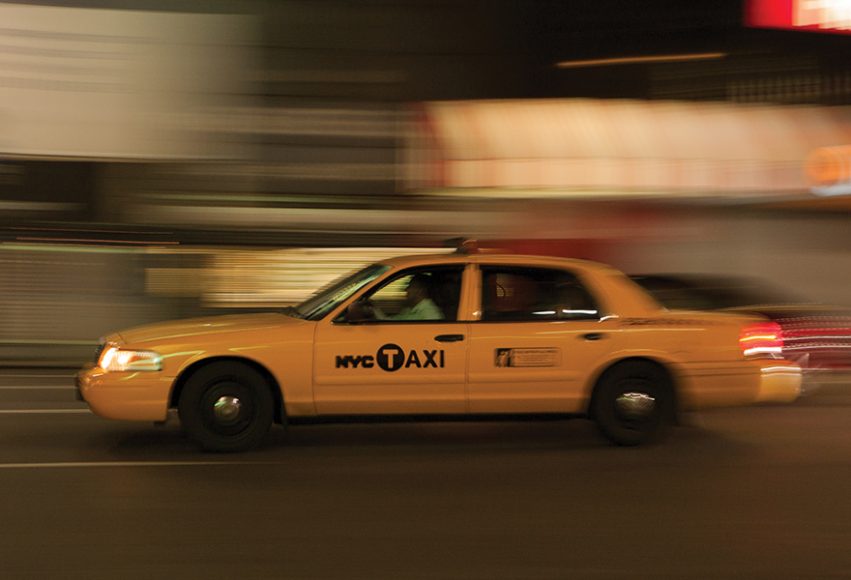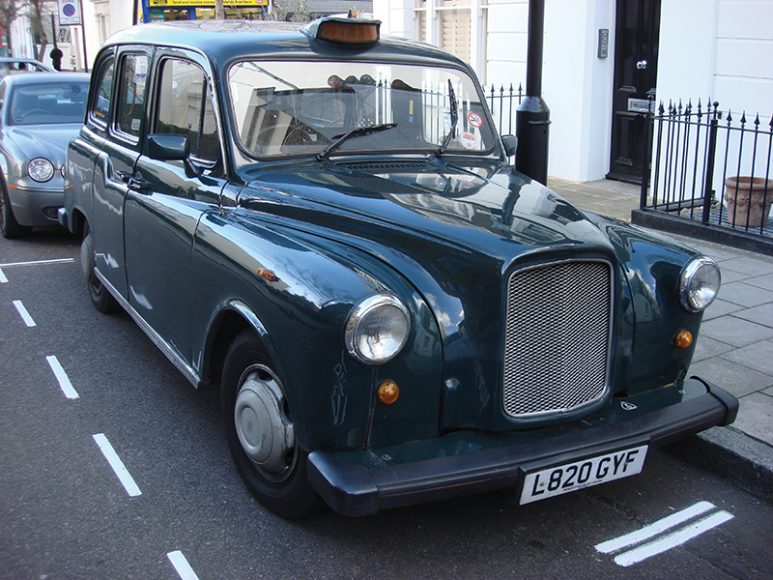Friends of ours, agonising over how to tell their 3-year-old son that his grandfather had just died, finally broke the news that Grandpa had gone to Heaven.
“Did he take a taxi?” the child asked.
A perfectly reasonable question. It would be a bit undignified, after all, to go to Heaven on the subway, even if Heaven had a station. And, as for the bus, well, in New York City, it would take at least another lifetime to get there. No, taxis are the only way to go, in death as in life.
Trouble is, hailing a taxi is a lot more complicated than it used to be. Lyft, Curb, Gett, Über. Do these names mean anything to you? This is what they mean to me, in order: “Eek,” “No available service in your area,” “What a hassle” and “Only if I’m desperate.” I know I’m in the minority, but technology and taxis to me are simply not bedfellows.
I like a phone-free, un-technological, clean hail. (A doorman’s two-fingered whistle never goes amiss, either.) And, once in the cab, I’ve no need of a disembodied voice telling me to buckle up for safety, a screen that spits out commercials or the option to pay using a credit card. Well, the truth is I don’t mind the last one so much — Who, after all, hasn’t found himself in a cab without a dime? — except the technology isn’t perfect. How many times have you swiped your card in a cab to no avail, cars behind starting to honk, beads of sweat forming on your brow? (This is the point at which I usually drop my card, then accidentally tread on it as I try to retrieve it.) No, technology be damned: I’d much rather hand over a $10 bill — or, more likely, a $20 — and be done with it.
There’s something romantic, too, about old-fashioned taxis, something that technology sucks the life out of. Travelling for a living, I’ve often thought that a city’s cultivation can be measured by the comfort of its cabs. London scores high on this scale of evolution, on account of its roomy black cabs and drivers who famously must pass The Knowledge, a three-year induction at the end of which they know every backstreet, lane and alley of the British capital. (Über drivers by contrast, while lovely people I don’t doubt, must rely on GPS. Chances are you end up in a ditch.) In Tokyo, taxi drivers wear white gloves; passenger seats are covered in white cambric; and antimacassars — the little cover at the back of the seat to protect from dirt or hair oil — are changed daily, sometimes even between fares.
Even in New York, there’s something immeasurably satisfying, sitting smugly in the back of a yellow cab (having managed to snag one in the first place), as once in a blue, blue moon you whisk 30 blocks up a near-deserted Sixth Avenue, feeling for all the world a living, breathing, speeding icon, a kind of symbol of New York itself. You don’t get that feeling in a Curb or a Lyft, I’ll bet. (And remember: Audrey Hepburn alighted from a yellow cab in front of Tiffany & Co. in “Breakfast at Tiffany’s,” not an Über.)
Technology aside, taxi journeys require clear communication. Good verbal skills, both on your part and the driver’s, are key when you are paying someone to take you somewhere, as I have discovered to my cost on three continents.
In Cairo, a friend and I hailed a cab at 4 a.m. We were off to see the sun rise over the Sphinx. Later that morning, we planned to ride cross-country over to the Great Pyramid at Sakkara, arriving early, before the sun was too high in the sky. We had a map, a solar topee and a packed lunch.
Nearly two hours after stepping into the cab, the sun was already up, the mercury was rising, the horrendous Cairo morning rush hour had begun and our sandwiches had gone soggy. We seemed to be going round in circles.
“Are we nearly at the Sphinx?” we asked the driver.
“Yes, yes, sphinky, sphinky,” he replied, pulling up five minutes later at the dilapidated ‘Sphinx Cinema’ in a grimy, outer suburb of the city.
The best taxi drivers have their ear to the ground. In Tangier, many years ago now, a taxi driver by the name of Muhamed Tahir, discovering I was a writer, asked my wife and me if we would like to visit the novelist Paul Bowles, with whom, he assured us, he was on friendly terms, and who enjoyed receiving strangers, especially English-speaking ones. If I was skeptical, I needn’t have been. A time was arranged and the next day, at 4 p.m., Tahir delivered us to the great man’s door, just in time for tea.
Few drivers I have come across, though, are as resourceful. In Shanghai, I asked to be driven to the Four Seasons hotel and was promptly taken to the Cemetery of Revolutionary Martyrs. Some years ago, in Hong Kong, I stood on a street corner, suitcase in hand and, when a taxi stopped, I asked the driver to take me to Kai Tak airport. He delivered me to the fish market instead. A friend recently found himself in Buenos Aires and asked to be taken to the synagogue. The driver feigned ignorance of the word sinagoga, so my friend drew a Jewish star on a piece of paper. “Caramba,” said the taxi driver, and whisked him off to the planetarium.
While technology might have helped get him to his destination more easily — Google translate, Google maps, Google whatever next — there’d have been no anecdote. Technology can help or hinder you, but a good story is forever.





I really like your take on the way communication is important when dealing with a taxi cab service. As I look for a service, I will be sure to check their communication skills. It is cool to have the potential to have a good story however that you wouldn’t get from another service.